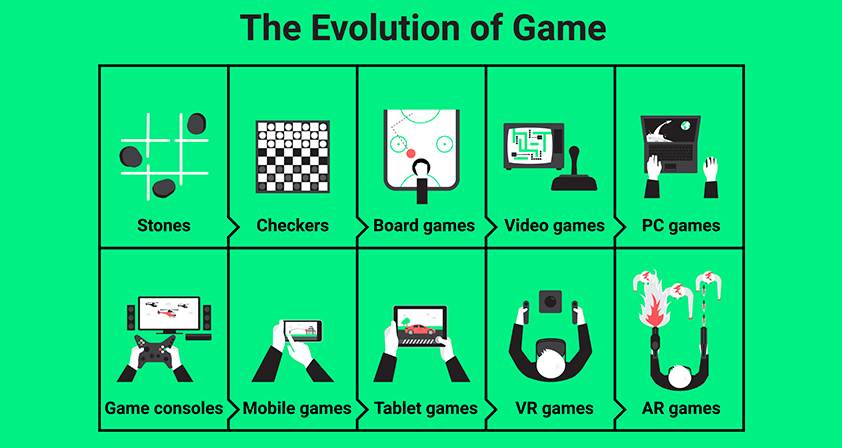The Evolution of Free-to-Play: A Glimpse into Online Gaming in 2025
Related Articles: The Evolution of Free-to-Play: A Glimpse into Online Gaming in 2025
Introduction
With great pleasure, we will explore the intriguing topic related to The Evolution of Free-to-Play: A Glimpse into Online Gaming in 2025. Let’s weave interesting information and offer fresh perspectives to the readers.
Table of Content
The Evolution of Free-to-Play: A Glimpse into Online Gaming in 2025

The landscape of online gaming is constantly shifting. While the traditional model of purchasing games outright remains, the rise of free-to-play (F2P) games has fundamentally altered how players engage with digital entertainment. By 2025, this trend will have matured further, offering a diverse and engaging ecosystem of games accessible to a wider audience than ever before.
The Appeal of Free-to-Play:
The allure of free-to-play games lies in their accessibility. Eliminating the initial purchase barrier allows players to experience a game without financial commitment, fostering a larger player base and fostering a sense of community. This model has proven successful, with numerous F2P games achieving significant popularity and generating substantial revenue through in-game purchases.
The Future of Free-to-Play in 2025:
By 2025, free-to-play games will continue to evolve, incorporating innovative monetization strategies and prioritizing player experience. Here are some key trends shaping the future of F2P gaming:
1. Enhanced Microtransaction Systems:
Instead of relying solely on cosmetic items, F2P games will offer more meaningful microtransactions that enhance gameplay without creating a pay-to-win environment. These might include:
- Time-Saving Boosts: Expediting progression through in-game activities, allowing players to focus on the core gameplay experience.
- Unique Content Packs: Offering exclusive items, characters, or expansions that enrich the game without impacting core mechanics.
- Subscription Services: Providing access to premium features, content, and perks for a recurring fee, fostering player loyalty and engagement.
2. Focus on Player Retention:
Free-to-play games will prioritize player retention through continuous updates, engaging events, and a robust community management system. This will involve:
- Regular Content Updates: Introducing new missions, quests, events, and challenges to keep the gameplay fresh and engaging.
- Community-Driven Development: Incorporating player feedback and suggestions into game updates, fostering a sense of ownership and engagement.
- Cross-Platform Play: Enabling seamless gameplay across multiple devices, increasing accessibility and player interaction.
3. The Rise of Subscription-Based Models:
While traditional free-to-play models will persist, subscription-based services will become increasingly prevalent, offering players a consistent stream of content and exclusive benefits. These services might include:
- Access to Premium Content: Providing early access to new expansions, exclusive characters, and in-game items.
- Ad-Free Gameplay: Eliminating intrusive advertising, creating a more immersive and enjoyable gaming experience.
- Community Perks: Offering exclusive in-game events, rewards, and access to dedicated support channels.
4. Blockchain Integration:
The integration of blockchain technology will revolutionize the way players interact with F2P games. This will include:
- Decentralized Economies: Allowing players to own and trade in-game assets, fostering a vibrant marketplace and encouraging player engagement.
- Transparency and Security: Providing a secure and transparent system for managing in-game transactions and assets.
- New Revenue Streams: Exploring new monetization models through the use of NFTs and other blockchain-based technologies.
The Importance of Free-to-Play Games:
The rise of free-to-play games has democratized access to digital entertainment, bringing the joy of gaming to a wider audience. This accessibility has fostered a vibrant and diverse gaming community, fostering creativity, collaboration, and social interaction.
Benefits of Free-to-Play Games:
- Accessibility: Eliminates the financial barrier to entry, allowing players of all economic backgrounds to enjoy gaming.
- Community Building: Fosters a sense of community through shared experiences, online forums, and collaborative gameplay.
- Innovation: Encourages developers to experiment with new gameplay mechanics, monetization models, and content delivery strategies.
- Increased Engagement: Offers players a variety of ways to engage with games, from casual play to competitive esports.
- Economic Opportunities: Creates opportunities for game developers, publishers, and content creators to generate revenue through microtransactions and other monetization methods.
Frequently Asked Questions:
1. Are free-to-play games truly free?
While free-to-play games do not require an upfront purchase, they often utilize microtransactions to generate revenue. These transactions can range from cosmetic items to gameplay-enhancing features.
2. Can I enjoy a free-to-play game without spending money?
Yes, many free-to-play games can be enjoyed without spending money. However, players may encounter limitations or slower progression compared to those who purchase in-game items.
3. Are free-to-play games fair?
The fairness of free-to-play games depends on the specific game and its monetization model. Some games offer a balanced experience, while others may create a pay-to-win advantage.
4. What are the risks associated with free-to-play games?
The primary risk associated with free-to-play games is overspending on microtransactions. It is important to set a budget and avoid impulsive purchases.
5. What are the future trends in free-to-play gaming?
Future trends include enhanced microtransaction systems, a focus on player retention, the rise of subscription-based models, and the integration of blockchain technology.
Tips for Playing Free-to-Play Games:
- Set a Budget: Determine how much you are willing to spend on microtransactions and stick to it.
- Research the Game: Read reviews, watch gameplay videos, and understand the monetization model before committing.
- Focus on Core Gameplay: Avoid feeling pressured to spend money on items that do not enhance the core gameplay experience.
- Take Breaks: Avoid spending excessive time on free-to-play games and take breaks to prevent burnout.
- Join the Community: Engage with other players, share tips, and participate in community events.
Conclusion:
The future of free-to-play gaming is bright. As technology evolves and player expectations change, the industry will continue to innovate and deliver engaging and accessible experiences. By understanding the trends shaping the future of F2P games, players can navigate this evolving landscape and enjoy the benefits of a diverse and dynamic gaming ecosystem.








Closure
Thus, we hope this article has provided valuable insights into The Evolution of Free-to-Play: A Glimpse into Online Gaming in 2025. We thank you for taking the time to read this article. See you in our next article!